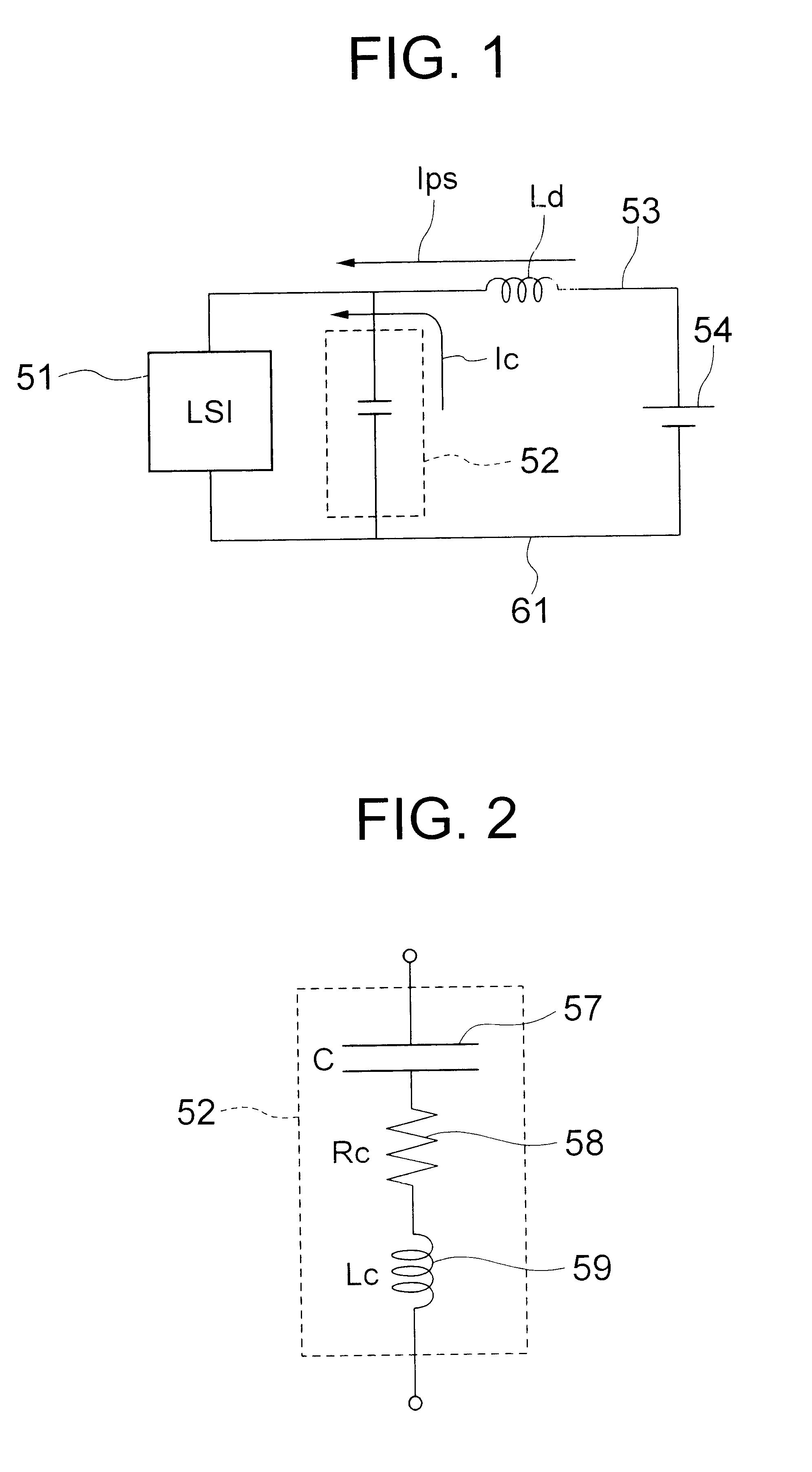Method for designing a decoupling circuit
a decoupling circuit and design method technology, applied in the direction of cad circuit design, cross-talk/noise/interference reduction, instruments, etc., can solve the problems of no known design theory by which the circuit designer or user can design the capacitance of the capacitor, and the general emission of unwanted electromagnetic field in digital circuits
- Summary
- Abstract
- Description
- Claims
- Application Information
AI Technical Summary
Benefits of technology
Problems solved by technology
Method used
Image
Examples
Embodiment Construction
Now, the present invention is more specifically described with reference to accompanying drawings, wherein similar constituent elements are designated by similar or related reference numerals.
Referring to FIG. 1, a decoupling circuit for a source line to be designed by the method of the present invention includes a decoupling capacitor 52 connected in parallel with an object LSI 51 between a source line 53 and a ground line 61, and a decoupling inductor (Ld) connected in series with the LSI 51 and formed by the structure of the source line 53. The source lines 53 carries current Ips supplied from a power source 54, whereas the decoupling capacitor 52 supplies a current Ic to the LSI during a short interval of the operation thereof. The method of the present invention determines the electric parameters of the decoupling capacitor 52 and the inductor 53.
Referring to FIG. 2, the decoupling capacitor 52 shown in FIG. 1 in fact has a serial electric elements including a capacitance 57, a...
PUM
 Login to View More
Login to View More Abstract
Description
Claims
Application Information
 Login to View More
Login to View More - R&D
- Intellectual Property
- Life Sciences
- Materials
- Tech Scout
- Unparalleled Data Quality
- Higher Quality Content
- 60% Fewer Hallucinations
Browse by: Latest US Patents, China's latest patents, Technical Efficacy Thesaurus, Application Domain, Technology Topic, Popular Technical Reports.
© 2025 PatSnap. All rights reserved.Legal|Privacy policy|Modern Slavery Act Transparency Statement|Sitemap|About US| Contact US: help@patsnap.com



